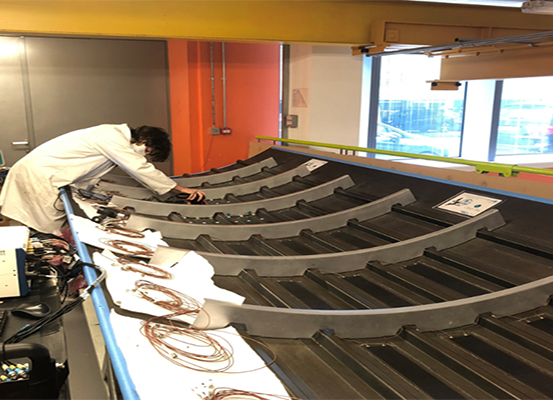Structural Health Monitoring (SHM) has many potential benefits for the aviation industry, including that it is non-destructive testing that could improve damage detection in composite structures, add safety to commercial aircraft, and based on the use of lightweight composite structures, reduce fuel consumption.
The SHERLOC program, developed by a consortium of experts from universities and industry in Europe, created a process to be applied to the components of regional aircraft composite fuselages. The SHM monitoring in SHERLOC is designed to target defects and damage likely in various composite manufacturing methods from design through manufacturing and the life of the structure. Constant remote, real-time monitoring by sensors integrated in the structures will reduce waste in manufacturing and trim resource use, leading to a more sustainable process.
SHM allows constant monitoring of the health of the structure no matter where the aircraft is at the time, reducing downtime and allowing for scheduling of maintenance. SHERLOC is the most comprehensive use of SHM available for aircraft structures made of composite materials, covering the integrity, durability, and longevity of every part.
The SHERLOC team addressed three manufacturing technologies and materials: hand layup and automated layup of thermoset prepreg, liquid resin infusion (LRI) and resin transfer molding (RTM) of thermoset material, and thermoforming for thermoplastic woven fabric. The typical damage predicted for each set of technologies and materials is unique, and a different, specific SHM system was developed for each structural part.


